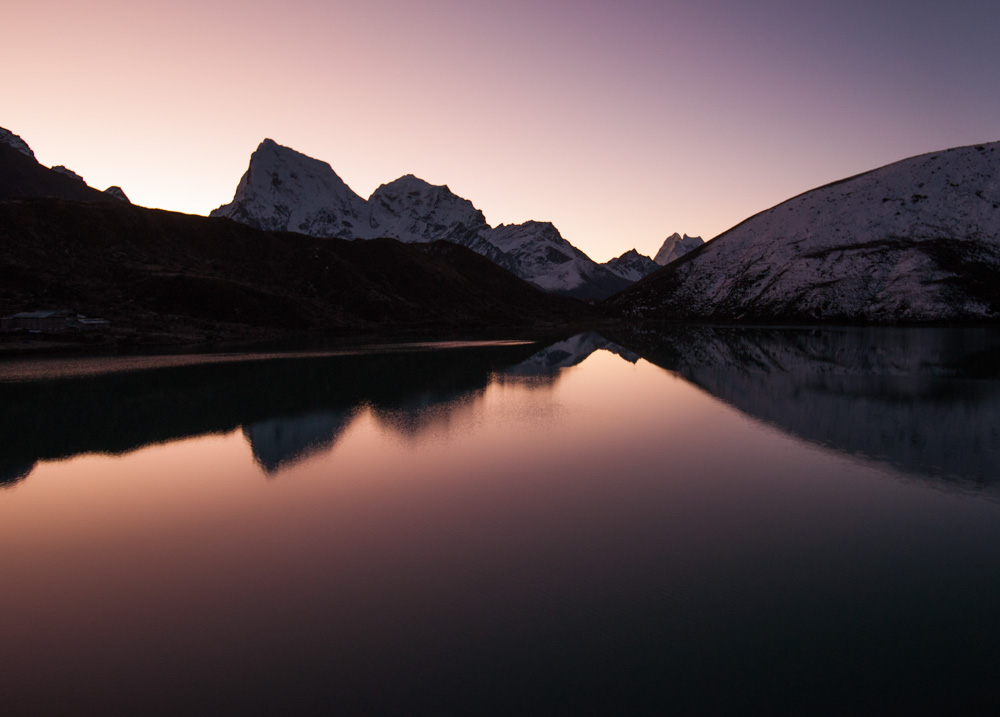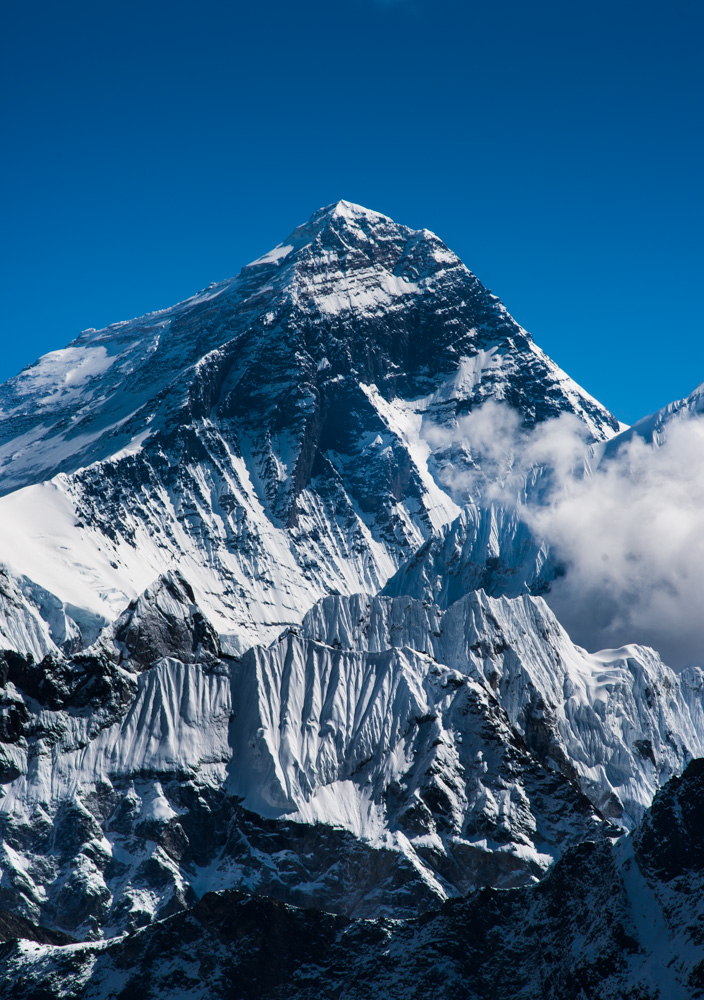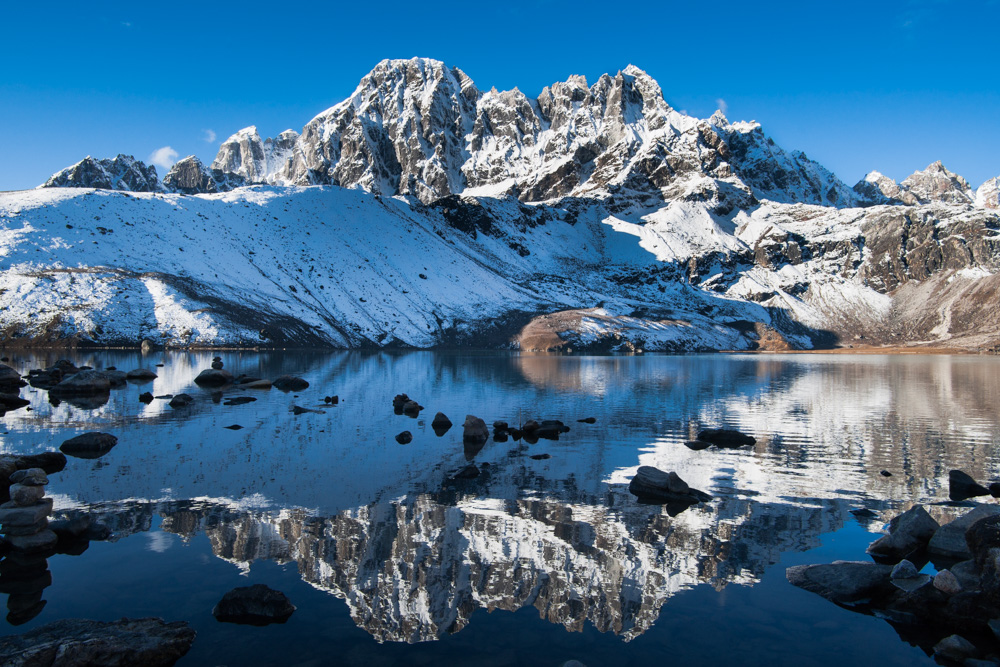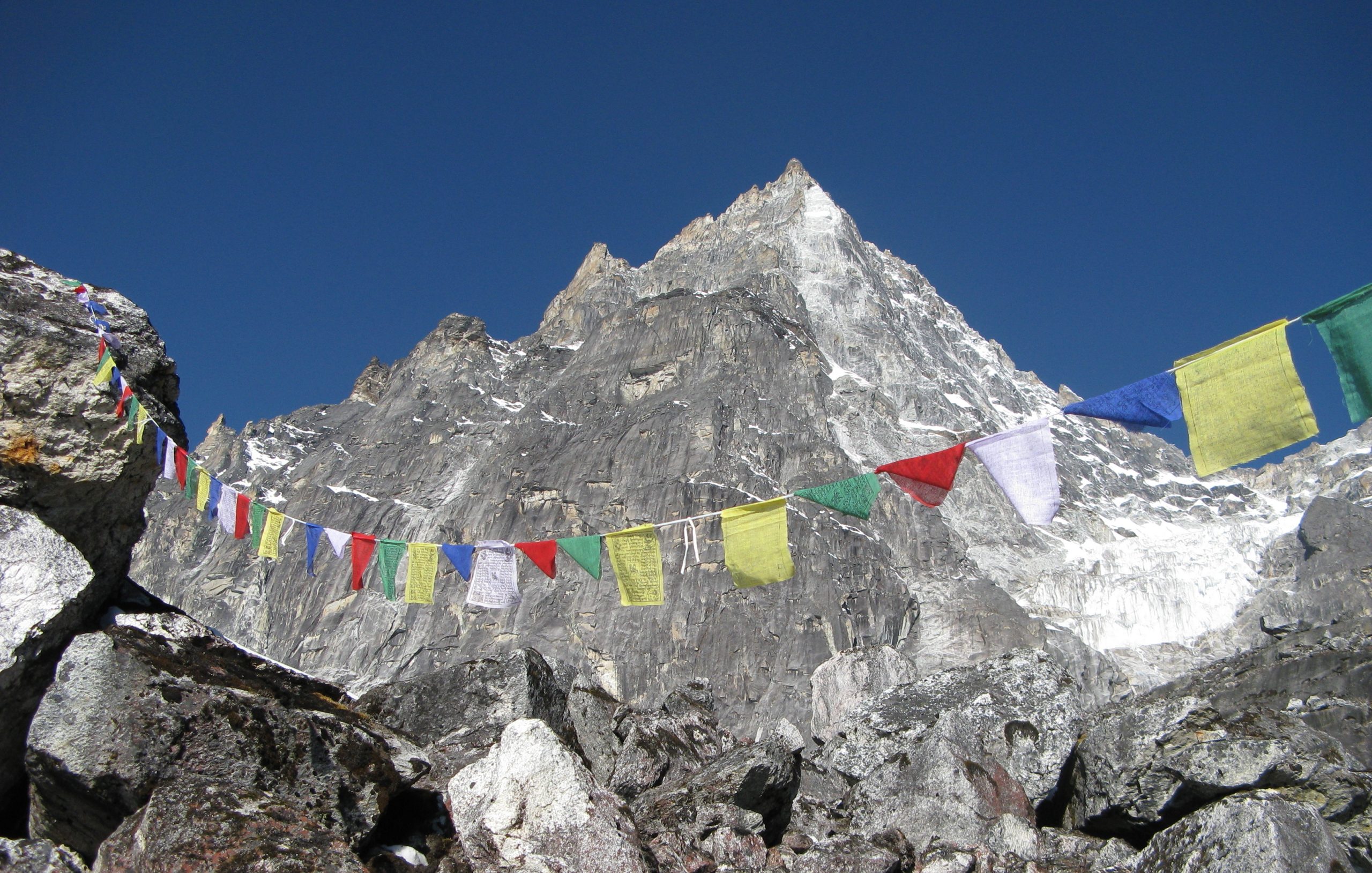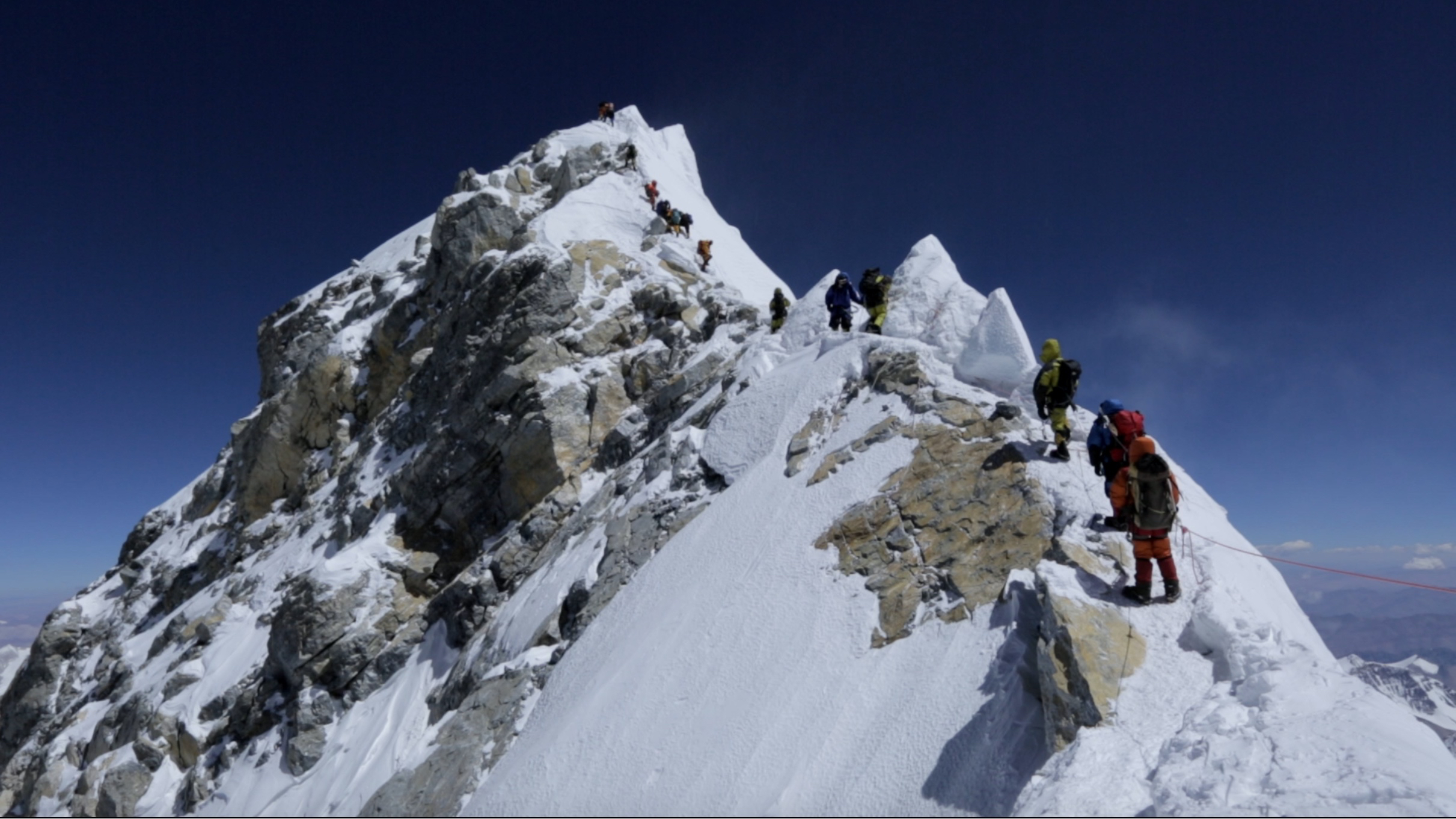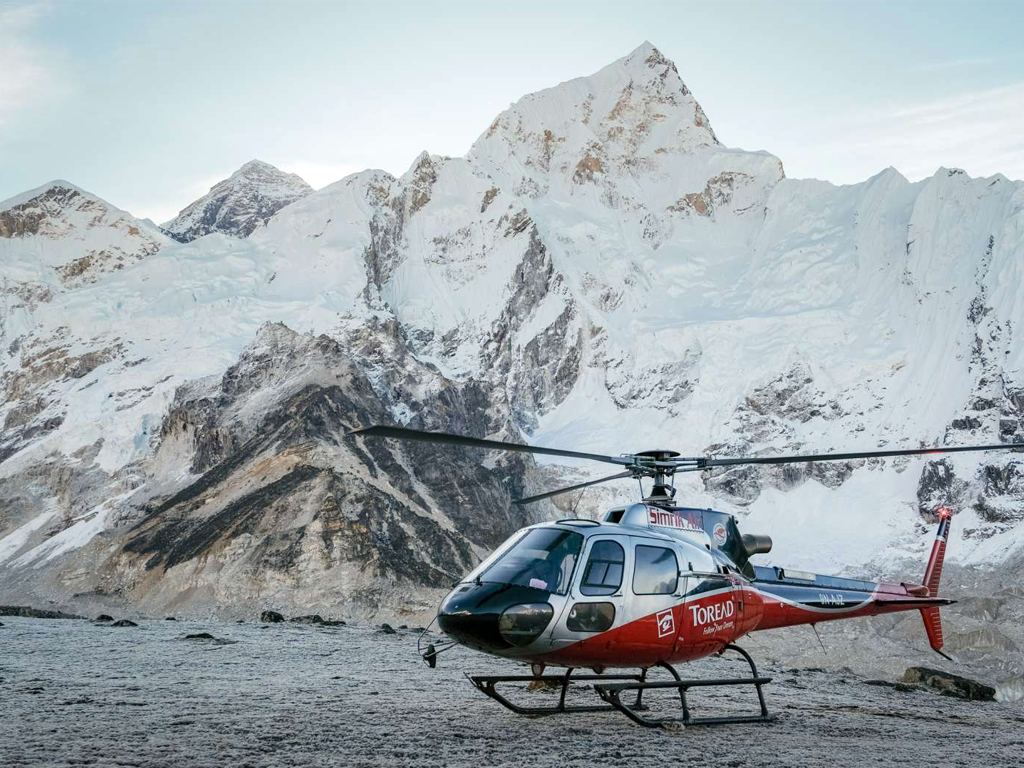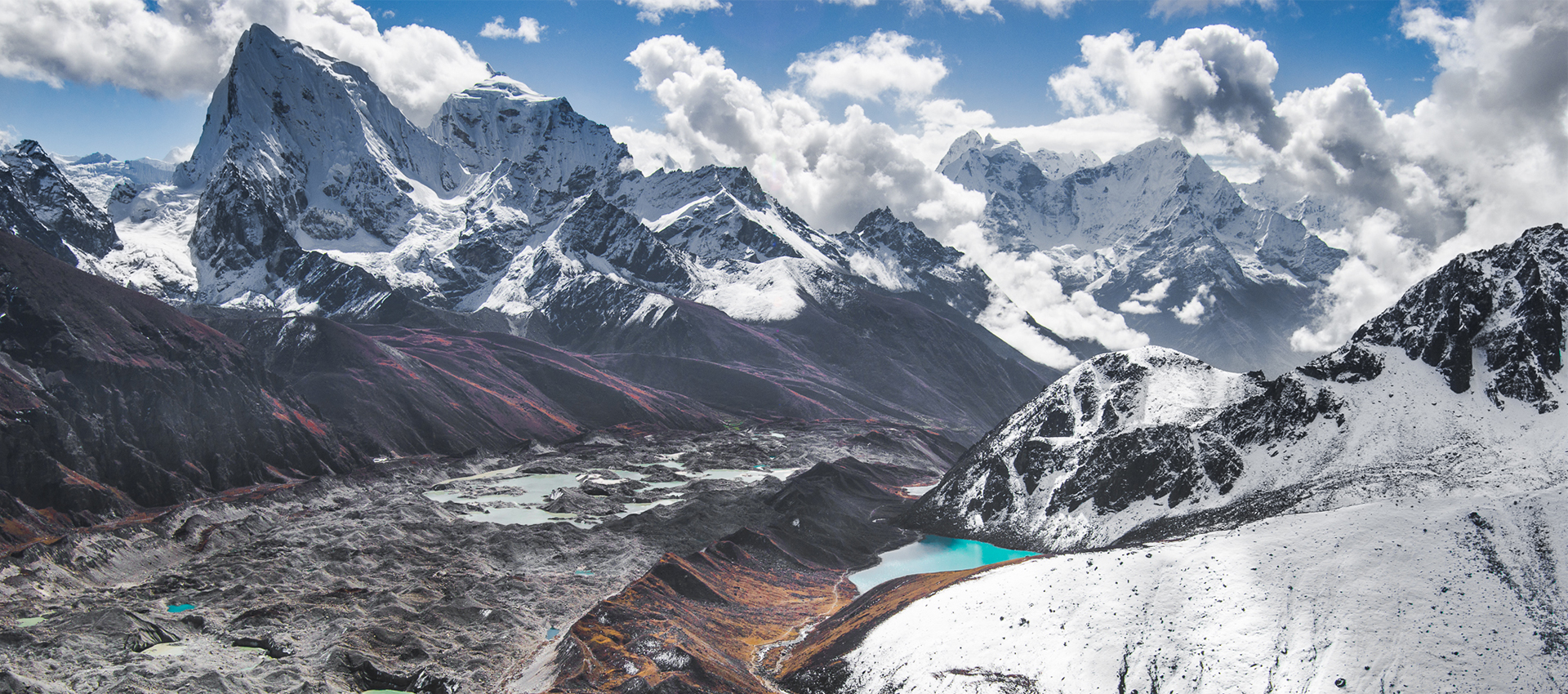
The Everest Base Camp Trek via Gokyo Lakes and Chol-La Pass
- Home /
- Nepal /
- Trekking & Hiking /
- Everest Region /
- The Everest Base Camp Trek via Gokyo Lakes and Chol-La Pass
The Nepal Himalayas are best seen on this trek as one traces the main route through the Khumbu region from the Sherpa town of Namche Bazaar. The trekkers get a close view of the world’s greater mountains, Everest, Lhotse, Nuptse and others. We cross beautiful Renjo la pass (5,340 m)and also visit beautiful Gokyo Lakes.
Route Map
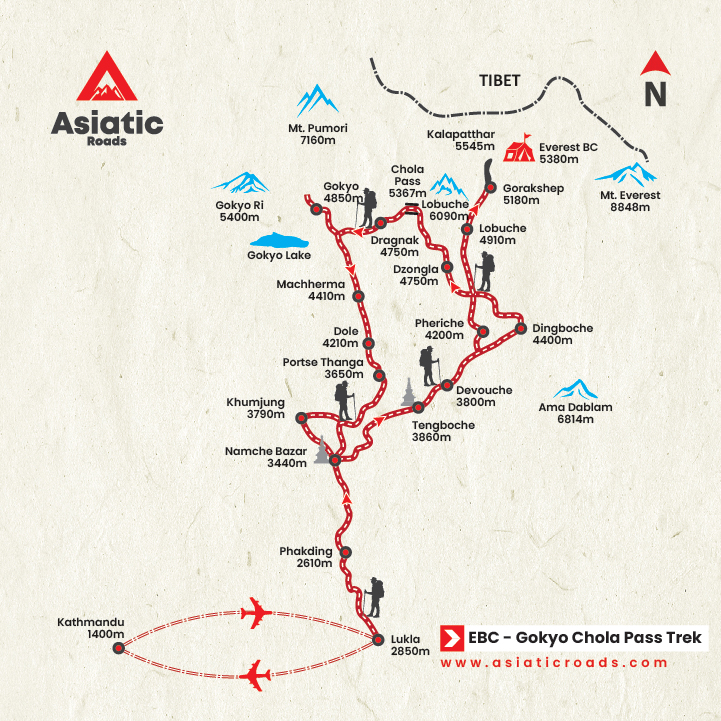
Itinerary In Detail
-
Day 01: Arrive in Kathmandu.
Upon arrival in Kathmandu’s Tribhuvan International Airport, meet Himalayan Holidays representative, assist and transfer to the hotel. At the lobby welcome refreshments will be served and room check in assistance provided. Rest of the day is free for leisure.
Eve: Welcome dinner at a Nepali restaurant featuring cultural program.
Overnight at hotel.
-
Day 02: Fly to Lukla (2880m) & Trek to Phakding (2652 m / 3 hrs)
The flight from Kathmandu to Lukla (2880m) with snowline of the Himalayan Range in the north
and the rugged landing in the Lukla airport is said to be one of the most spectacular in the world.
After a short break the trek starts by following the trail leading to the northwest direction, which ultimately descends to the riverside settlement at Phakding (2652m).
Dinner and overnight at tea house lodge.
-
Day 03: Trek to Namche Bazaar (3447 m / 4 hrs).
Follow the Bhote Koshi through the forest and pasture land, along the valley dotted Sherpa Settlements Manjo. After Monjo walk about 10 minute to reach to Jorshale, where your Sagarmatha National Park entry permit will be checked. From Jorshale descent down again to Bhote Koshi River and Cross the Bhote Koshi and climb steeply, along switching back trail, lies the large Sherpa village of Namche Bazaar. Near half way point, view of Everest (8848 m) and Lhotse (8511m) come into sight. This prosperous town is largest in Khumbu. Mt. Thamserku (6648m) and Kwangde Ri (6624 m) loom along the east and west of the village. The sacred mountain Khumbila (5707 m) dominates the skyline along the west. Duration of trek = 6 hours.
Dinner and overnight at tea house lodge.
-
Day 04: Trek to Khumjung (3,791 m)
After breakfast hike to famed Everest View Hotel (3,880m) to enjoy the magnificent view of Mt. Everest and other snowcapped Mountains including Lhasa, Nuptse, Amadablam, Thamsherekhu. After spending some time for acclimatization in higher elevation descent slowly to Khumjung Village through the Pine forest.
Rest of the day is free to Explore the largest Sherpa Village including the School built by Sir Edmond Hillary.
Dinner and overnight at teahouse lodge.
-
Day 05: Trek to Dole (4,040 m)
The trail leads down past the school and the Khumjung village before dropping into the rhododendron scrub forest and then towards an impregnable looking rock wall on the north side of the valley. A gaint’s causeway of the granite step makes incredible route up the face before the trail emerges the high grazing ground. One hour futher is a charming chorten, from here you can tha magnificient view of the Ama Dablam (6856m), Kangtega (6685m) and Thamserku (6648m) standing high above the meadows of the Thyangboche monastery. The trail drops quickly nearly all the way to the Dodh Kosi before leaving the route to Phortse. There is a good lunch spot set among the birch and rhododendron. The camp spot at Dole is reached after a stiff but attractive climb. Trek duration 6 hours.
Dinner and overnight at Tea House Lodge in Dole.
-
Day 06: Trek to Machhermo (4,400m)
The first hour involves steady climbing before the trail contours to Luza (4370 m), a small grazing spot with potato fields. Machhermo village is reached after a short climb from here. Duration of trek 5 ½ hours
Dinner and overnight at teahouse lodge.
-
Day 07: Trek to Gokyo Lake (4,750 m).
A steady plod soon leads to the first of the Gokyo lakes and then to the main lake before reaching the Gokyo for lunch.
Rest of the day is for rest and acclimatization.
-
Day 08: Trek to Gokyo Ri & Return
Gokyo Ri (5483m) and Return. Unlike the Kala Pattar hill from Lobuche, the foot of Gokyo Ri lies five minutes away from the stream the feeds the Gokyo Lake.
After two to three hours “huff and puff” you reach the summit not to be disappointed for your effort at all, as the views from here are well worth than from Kalapatthar, with Makalu (8475m) further to the east and Cho Oyu (8153m) towards the north makes a mesmerizing view to watch. Return back to Gokyo Ri after spending a wonderful break at the summit.
Dinner and Overnight at teahouse lodge.
-
Day 09: Gokyo to Dragnag (4,700/5 hrs.)
Today’ trek provides a dramatic change of trekking scenery as your cross the Gokyo Glacier itself. Walk back down the Gokyo Valley along the way you came. Just after the second lake, a tiny cairn marks a small path rising on the left up the moraine. We take this path to the crest of the moraine. Descends the marked path onto the Gokyo Glacier. It feels like walking on Mars. The scenery is so different to what you have seen before- its rock rubble and dust, and even a few sand dunes. Here and there, a little ice is visible, together with iced up pools. The lack of visible ice suggests that this glacier is retreating rapidly. Perhaps it’s a result of Global warming or perhaps just a natural long term climatic change. At least there is no grass growing on it yet. We reach the lateral moraine on the far side, and you will have the earth under your feet again. Walk along the path to the tiny village of Dragnag. The village is just below a small cliff. There are few lodges: The Thanknag lodgei s operted as a European style alpine refuge by Austrian trained Sherpani lady. She’s just like a European refuge guardienne. The Dragnag Khola runs down the valley. The route to the Cho la lies up this valley.
Dinner and overnight at Dragnag.
-
Day 10: Trek to Dzongla (4840m / 6~7 hours) Via Cho la pass (5240 m)
An early start is recommended. The route lies over the large, uncomfortable broken rock of the Pass itself. Depending on the time of the year the route to the summit snowfield of the Chyugima La Pass or Cho la (5240m) may or may not be covered by snow. The descent starts gently before steeping down. The broken ground route leads to the few stone huts that make up the Dzong La. Duration of trek: 4 ½ hours.
Dinner and overnight in Dzongla.
-
Day 11: Trek to Lobouche (4920 m / 4~5 hrs.)
An ill-defined track traverses across to join the main trail coming up from Pheriche. On the way you can watch the beautiful view of the Mt. Cholatese (6442m) back on the west side of the route. A steep ascend leads to the terminal moraine of the Khumbu Glacier. The stark and the rugged beauty create almost a moonscape. The campsite at Lobuche is situated at the wind swept valley with the enchanting views of the Tawatse (6501m) and Nuptse (7855m). Duration of trek 6 hrs.
Dinner and overnight camp at Lobuche.
-
Day 12: Trek to Gorakshep (5160m) & Climb Kalapatthar (5545m) – 7~8 hrs.
From Lobuche, a short climb brings one to another valley. Travel along the Khumbu Glacier through the jumbled moraines and scattered rocks. The trail continues to slowly contour on the open landscape through an ablation and after about an hour, there is a steep ascent for about 20 minutes. Climb slowly to a ridge and then continue on a trail of rocks caused by rockslides. On a clear day Mt. Everest can be seen looming behind Nuptse. Arrive at the ridge above Gorakshep and then descend to Gorak Shep (5160m), a settlement with 2 teahouses to stay for overnight. This was the base camp for the 1952 Swiss Everest expedition. In 1953 the British Everest expedition called this “lake camp’. Gorak Shep or “graveyard of the crows” has a small lake that is usually frozen and several monuments to climbers who have died during various Everest expeditions.
This was the base camp for the 1952 Swiss Everest expedition. In 1953, the British Everest expedition called this “lake camp’ frozen and several. Gorak Shep has a small lake that is usually frozen and several monuments to climbers who have died during various Everest expeditions. The carved stone in memory of Jake Britenbach of the 1963 US expedition and the monument of Indian Ambassador H. Dayal, who died during a visit to base camp after the 1965 Indian expedition, are northeast of the lake.
After setting up the camp and lunch at Gorak Shep, take the left hand side trail and head straight up the hill to Kala Patthar (5545m) for views of Mt. Everest. The trek up to the top is an arduous one and takes about an hour to reach it. The late afternoon is the best time to view Mt. Everest from this vantage point as the sun is behind the observer and directly on the mountains in front. The climb to Kala Pattar though tough, is well worth it as the view from here is breathtaking. The giants of the earth are all around like Pumori (7145m), Everest (8848m), and China’s peak Changtse (7553m), Nuptse (7855m), Lhotse (8516m), Ama Dablam and many others. Later return to Gorak Shep.
Dinner and overnight at Gorak Shep.
-
Day 13: Day trip to Everest Base Camp (5360m) & Backtrack to Gorakshep – 8 hrs.
The trip to base camp, while fascinating, is not spectacular as the ascent of Kala Pattar because there is no view of Everest itself from the base camp. Mt. Lhotse and Mt. Nuptse, which loom over the Base Camp, shades the view of Everest.
Travel along the jumbled moraines and scattered rocks passing by the memorials of Rob Hall and Yasuko Namba and others who perished during the Mt. Everest disaster of 1996. The trail continues on a ridge from where a small glimpse of Mt. Everest can be seen. At the end of the ridge, a scrabbling descent leads to the entry into the Khumbu Glacier. The trail through the glacier is an interesting one in that one can actually feel as if one in inside a fridge with the coldness seeping from all sides. The Everest Base Camp is also the site for the base camp for Lhotse and Nuptse. It is not actually a specific site as various expeditions have selected different locations for a semi-permanent camp during their assault on the mountain. Some of the sites that expeditions have used as base camps are identifiable form debris on the glacier at 5360m or more. However the highlight of the trip to this place is the sight of the Khumbu icefall and the trek along the Khumbu Icefall is an interesting and an exhilarating one. Later return via the same route to Gorak Shep.
Dinner and overnight at Gorak Shep.
-
Day 14: Trek to Devouche (3800 m / 8 hours.) via Pheriche.
After breakfast trek down to Pheriche for Lunch. After lunch continue to Devouche.
Dinner and overnight at Tea house lodge in Devouche.
-
Day 15: Trek to Namche (3400 m / 6 hours.)
After breakfast trek to Namche Bazaar.
Dinner and overnight at Tea House lodge in Namche Bazaar.
-
Day 16: Back track to Lukla
The trek from Namche to Lukla is a long days walk. From Namche, head to the end of the village and then immediately start to descend to the river. If going up was tough it is equally hard to get the footing and walk down hill. Head along the banks of the river and then further descend to Monjo for Lunch. It is interesting to watch others starting enthusiastically on the trek ahead. From Phakding, it is a surprising hard uphill climb to Lukla, which should take about 3 hours. It is a delightful ending to the trip as one enters into this busy village and our campsite at Lukla
Dinner and Overnight at Lukla.
-
Day 17: Lukla / Kathmandu
Early morning, fly from Lukla to Katmandu on a twin Otter. Upon arrival, meet, assists and transfer to the hotel. Rest of the day is free.
Eve: Group Farewell Dinner at the famous Rum Doodle Restaurant & Bar.
Overnight at hotel.
-
Day 18: Free till final departure from Kathmandu.
Free until final departure transfer to the airport assisted by representatives from Himalayan Holidays.
13 Days From
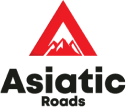
Any Question?
Feel free to call our travel experts.
+977 9851189018, +977 9801089018
info@asiaticroads.com
13 Days From

Any Question?
Feel free to call our travel experts.
+977 9851189018, +977 9801089018
info@asiaticroads.com
13 Days From

Any Question?
Feel free to call our travel experts.
+977 9851189018, +977 9801089018
info@asiaticroads.com
Reviews
In my 2 week stay, John was very professional and took me around to experience all that Kathmandu and surrounding areas has to offer. Sites were seen and many locals were met through John’s network.

Steven Stone
TravellerIn my 2 week stay, John was very professional and took me around to experience all that Kathmandu and surrounding areas has to offer. Sites were seen and many locals were met through John’s network.

Steven Stone
Traveller13 Days From

